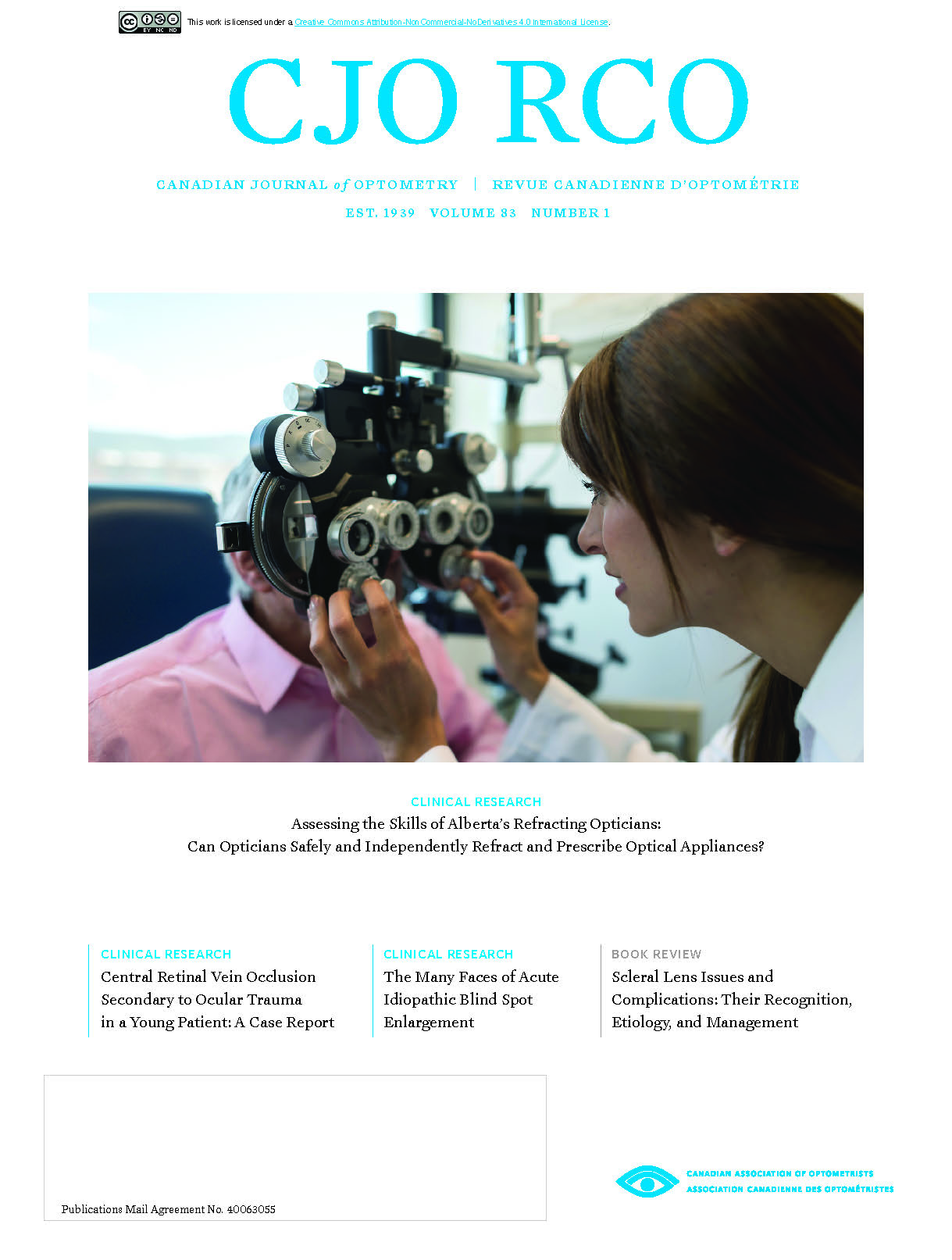Assessing the Skills of Alberta’s Refracting Opticians: Can Opticians Safely and Independently Refract and Prescribe Optical Appliances?
DOI:
https://doi.org/10.15353/cjo.v83i1.1711Keywords:
Alberta, Optician, Optometrist, Refract, Prescribe, TrainingAbstract
Alberta is one of three Canadian provinces that permits optician-performed refractions. Recently, the Alberta College and Association of Opticians (ACAO) has requested an expansion of opticians’ scope of practice to include the ability to prescribe optical appliances, an activity currently restricted to optometrists and ophthalmologists. For the remainder of this paper, the term “prescribe” should be interpreted as the prescription of an optical appliance, not a therapeutic pharmaceutical agent. In this paper, we investigate whether designated refracting opticians in Alberta have adequate training and knowledge to safely and independently perform a refraction and prescribe an optical appliance. To answer this research question, we composed a list of 27 skills we deem necessary to safely and independently refract and prescribe. We then evaluated the Northern Alberta Institute of Technology’s (NAIT) opticianry programs and the entry to practice examinations administered by the National Association of Canadian Optician Regulators (NACOR) and the Optometry Examining Board of Canada (OEBC) in terms of their coverage of these 27 skills. Our findings show that NAIT’s optical science programs either do not cover or do not practically assess students on over half (59 percent) of the skills required to safely and independently refract and prescribe, and the NACOR examination fails to cover 77 percent of the skills required to safely refract and prescribe. Based on this information, refracting opticians in Alberta do not possess adequate training and knowledge to safely and independently perform a refraction and prescribe an optical appliance. Granting opticians the legislative authority to independently refract and prescribe may result in a public health issue, as there may be an increase in the number of un-diagnosed or un-detected eye and systemic diseases.
Published
How to Cite
Issue
Section
License
Copyright (c) 2021 Alyssa Erin Anderson, Gordon Hensel

This work is licensed under a Creative Commons Attribution-NonCommercial-NoDerivatives 4.0 International License.


